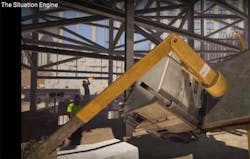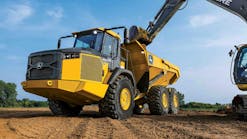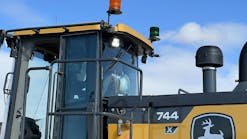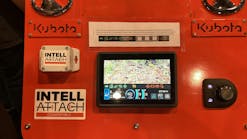Virtual Reality Shocks Workers into Safer Behavior
If you somehow lived through a catastrophic accident on a construction job site—the kind of accident where you should have died—would you pay more attention to job site safety procedures in the future?
Bet you would.
Safety experts at the University of New South Wales (UNSW) are also betting on that, and they have developed a bit of technology called The Situation Engine.
Here's the problem: With construction on an upswing, new workers with little or no experience on an active job site with heavy equipment, fall hazards, and dangerous materials are entering the workforce. Some of the new hires are young, ready and able; and there is no doubt in their mind that they will never be seriously hurt in a construction accident. They simply haven't been around long enough to witness what can happen when a fatal mistake is made.
Then there are the more experienced workers who know how to work safe, have dodged the bullet a couple of times, but sometimes take a few shortcuts to get a job done faster because they've done it that way for years.
Both workers might tell you safety is boring. Drop dead dull. So, how do you grab and keep your workers' interest in construction safety?
Here's the solution created at UNSW:
“Cognitive shock is necessary to restructure our beliefs and understanding of the world in a way that translates into changed behavior,” says Sidney Newton, associate professor of building economics at University of New South Wales. But, experiencing that level of shock within an actual life-threatening environment isn't practical.
Sidney Newton and Russell Lowe at UNSW have developed a new hyper-immersive system that uses gaming technology to put workers in perilous, life-threatening scenarios using a computer or Oculus Rift headset.
The Newton and Lowe say this software systems is the first of its kind to be developed by construction safety experts. “The experience of The Situation Engine is intended to challenge and confront,” said Newton. “The hyper-real environment engages workers more effectively than traditional, information-based training."
Newton and Lowe have replicated construction sites—right down to machinery, signs and equipment— because the system's scenarios must be convincing and feel authentic. Data from multiple sources such as video streams, spacial scanning devices, web feeds, blogs, building information models, blogs - just about anything digital - has been bred into the system because hazards have to be realistic and grab the participant's senses in order for the user to change their behavior.
The advanced technology of The Situation Engine far surpasses the equipment simulators used in the not-so-distant past. And because the system creates a 'situational' reality, the user becomes more engaged—makes an emotional connection—to the safety issue being experienced. There is a definite start-and-stop, cause-and-effect context in the system surrounded by rich environmental surroundings.
“The Situation Engine allows workers to experience several different sites at varying stages of construction,” Newton said, “all of which pose risks like electrocution, falling objects or working at elevated heights. They can observe and forensically diagnose problems as they ‘walk’ through different scenarios.”
The Situation Engine uses capabilities found in the “first-person shooter” (FPS) video game engine. FPS game engines (a kernel of coding used to drive a collection of actual game implementations) use high-performance graphics to deliver moving photo-realistic scenes in real-time 3D with associated surround-sound audio and tactile feedback to the user. FPS games are characterized by the use of an avatar which allows the user to see and be seen as a person as in real life (i.e., bound to one’s own body), and to interact with other real-time users. Artificial intelligence and social dynamics are also incorporated into the system to provide the additional influences of group behavior found on jobsites.
The Situation Engine won the Premier International Innovation and Research Award last year. Currently The Situation Engine is being used to train architects and construction managers at UNSW and other Australian universities. China’s leading power generation company, China Light and Power, is using the system for safety training.
Source: Global Construction Review





